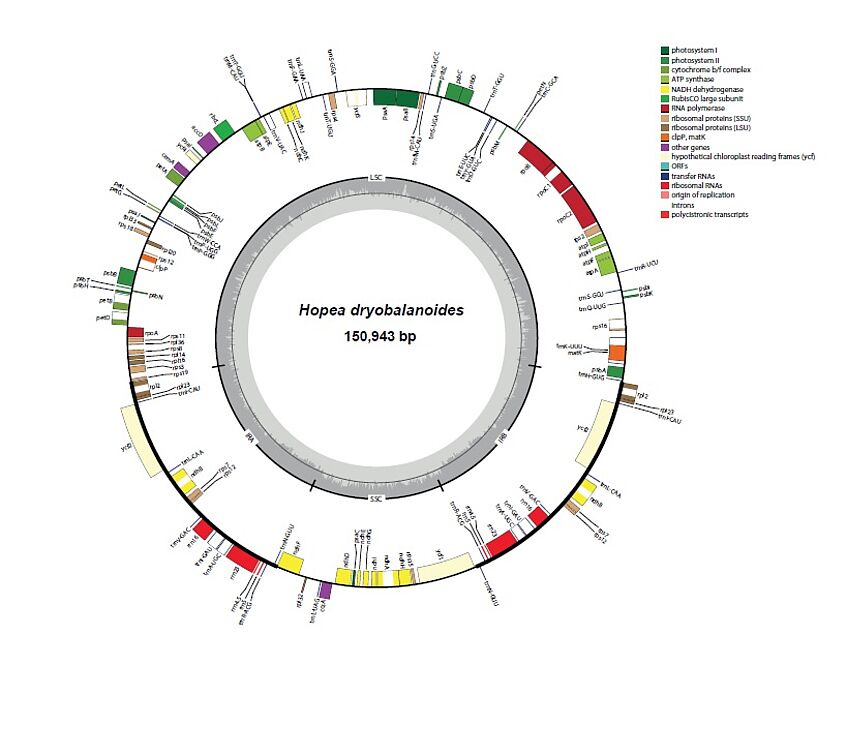Analyses of plastid genomes in the tribe Shoreeae (Dipterocarpaceae): inferences in phylogenetic relationships
- Background and Aims: Phylogenetic relationships within tribe Shoreeae, containing main elements of tropical forests of Southeast Asia, present a long-standing problem in the systematics of Dipterocarpaceae. Sequencing whole plastomes using next-generation sequencing (NGS)-based genome skimming is increasingly employed for investigating phylogenetic relationships of plants. Here, the usefulness of complete plastid genome sequences in resolving phylogenetic relationships within Shoreeae is evaluated.
- Methods: A pipeline to obtain alignments of whole plastid genome sequences across individuals with different amounts of available data is presented. In total, 48 individuals, representing 37 species and four genera of the ecologically and economically important tribe Shoreeae sensu Ashton were investigated. Phylogenetic trees were reconstructed using maximum parsimony, maximum likelihood and Bayesian inference.
- Key Results: Here, the first fully sequenced plastid genomes for the tribe Shoreeae are presented. Their size, GC content and gene order are comparable to those of other members of Malvales. Phylogenomic analyses demonstrate that whole plastid genomes are useful for inferring phylogenetic relationships among genera and groups of Shorea (Shoreeae) but fail to provide well-supported phylogenetic relationships among some of the most closely related species. Discordance in placement of Parashorea was observed between phylogenetic trees obtained from plastome analyses and those obtained from restriction-site associate sequencing (RADseq) derived from single-nucleotide polymorphism (SNP) datasets.
- Conclusions: Phylogenomic analyses of the entire plastid genomes are useful for inferring phylogenetic relationships at lower taxonomic levels but are not sufficient for detailed phylogenetic reconstructions of closely related species in some groups of Shoreeae. Discordance in placement of Parashorea suggests ancient hybridization or incomplete lineage sorting.

